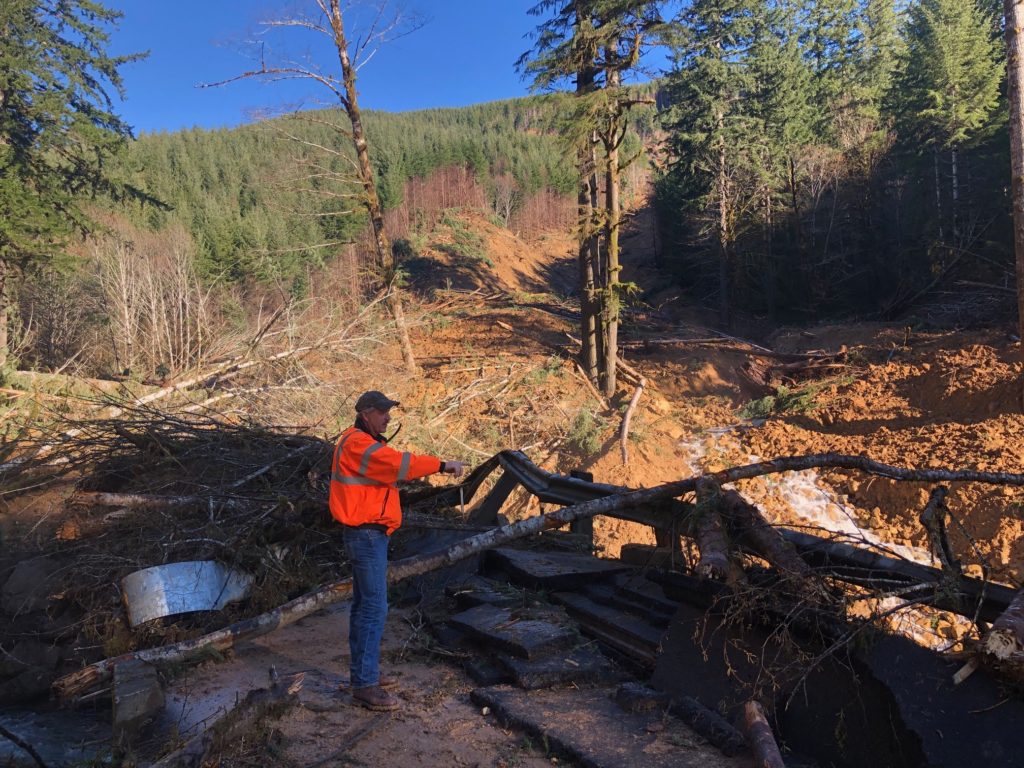
By QUINTON SMITH/YachatsNews.com
A massive landslide on private land that momentarily smothered Fall Creek and damaged a Lincoln County bridge 27 miles east of Waldport in late December, will likely just have to run its course over the next few years, state and county officials now say.
The Oregon Hatchery Research Center, which sits one mile downstream of the slide, has resumed normal operations – but with round-the-clock monitoring of its water intake system — with scientific studies underway and three employees and one volunteer returning to live and work there.
The initial inspection of a 76-foot-long county-owned concrete bridge across Fall Creek shows only partial damage. The bridge might be able to be repaired for as little as $30,000 instead of being replaced for $1 million, as county officials initially feared.

Meanwhile, county, state and Weyerhaeuser officials are taking a cautious approach while waiting to see how much more the mammoth slide moves this winter and what – if anything – they can do about it.
“It’s a deep-seated landslide that’s been around for decades,” said Michael Curren, manager of the West Oregon District of the Oregon Department of Forestry. “And with deep-seated landslides there isn’t much we can do about them. We usually let nature run its course and go from there.”
The slide area on Weyerhaeuser property – about 35 acres of second-growth trees that are 30-40 years old — was first noticed after torrential rains in December 2016.
While the land didn’t move much, silt from the slide was a constant wintertime problem for the clean water intake downstream at the research center, which since 2005 has drawn scientists from all over the world to conduct studies of salmon and steelhead.
But the bigger worry was that if the slope failed completely, it could smother Fall Creek with a debris dam, water would build up behind it and then the whole thing collapse and wipe out the research center and homes in the valley below.
In 2018, the state installed a low water alarm at the center and Lincoln County set up a “reverse 9-1-1” call system to alert hatchery employees and downstream residents of a landside.
That’s what happened the night of Sunday, Dec. 20.
After the heaviest rain in four years, the slide finally gave away, pushing massive amounts of dirt, boulders and trees into the creek below and setting off alarms downstream.
Research center employees and residents downstream evacuated safely and the much-feared debris dam did not materialize. Instead the heavy rains pushed the debris downstream past the research center, the properties below and into the Alsea River.
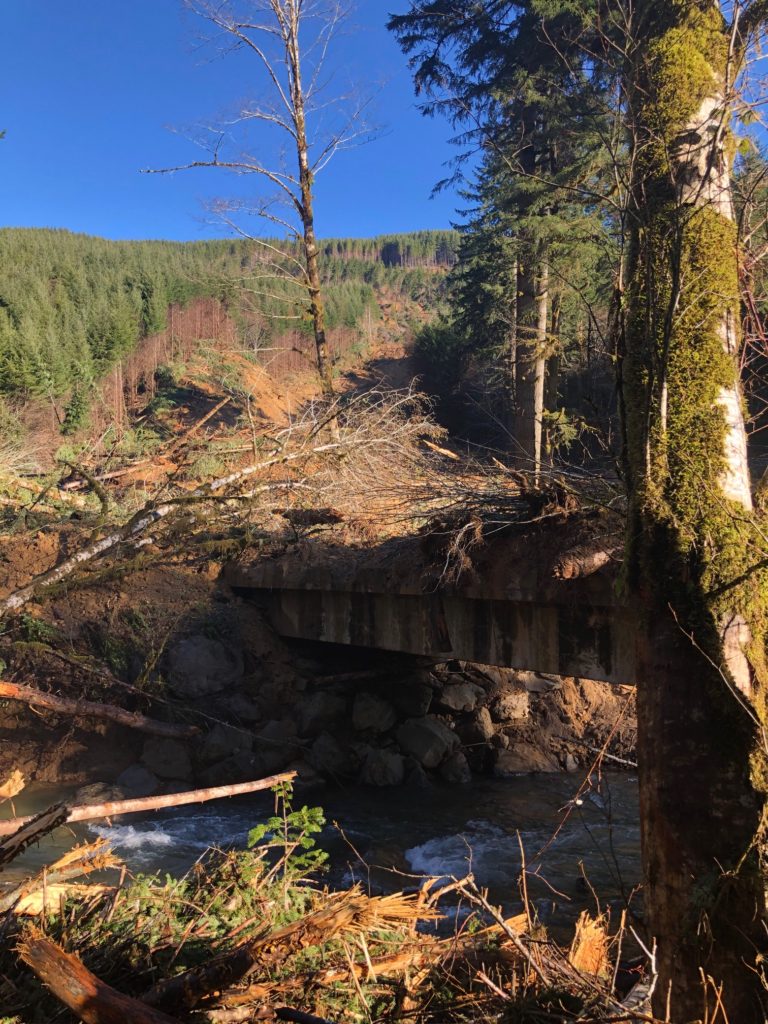
County bridge takes direct hit
The county bridge took the brunt of the slide – a direct hit on the east end, slicing off both guardrails, damaging the deck and sending mud and trees over to the west side.
Kelly Foley, the county’s bridge maintenance supervisor, inspected the bridge Dec. 28. It appears only one of four 76-foot-long “T” concrete beams was damaged, he said.
Inspecting the bridge supports on the west and east ends will have to wait until bad weather subsides and county crews can safely remove debris and remnants of the bridge desk.
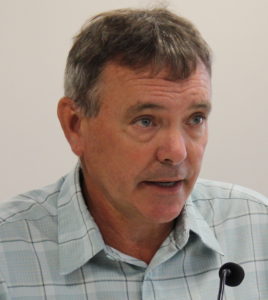
Lincoln County Public Works Director Roy Kinion if the county “gets lucky” it could mean just having to replace one beam, deck and guardrails – and maybe a bill as low as $30,000.
That money would come out of the county’s bridge repair budget, he said, not any insurance or going after the property’s owner.
“It’s an act of God,” Kinion said. “It’s not anything Weyerhaeuser did to cause this. We’ve had these huge slides before in other places … we just haven’t had a bridge under one.”
Still, the county will be cautious about working in the narrow canyon and crossing the river to the county road on the east side that is also buried in mud and trees.
“There’s a lot of material still moving,” Kinion said. “That upper piece of that slide is still sitting up there.”
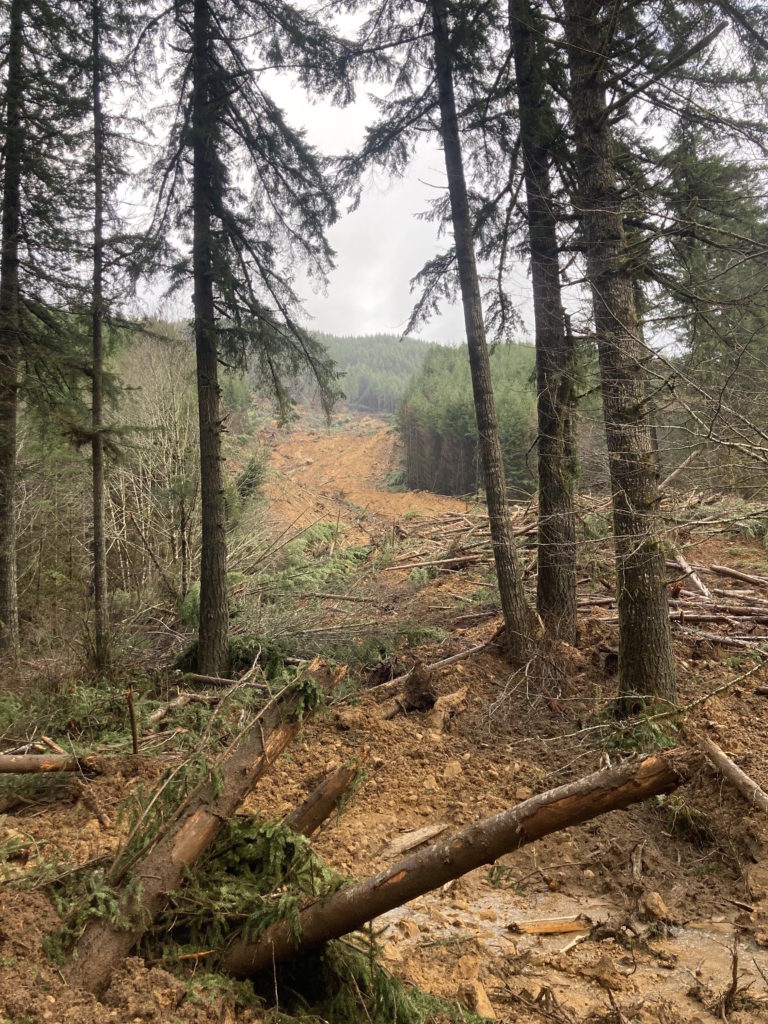
Weyerhaeuser investigating also
A spokeswoman for Weyerhaeuser says the company is working with Lincoln County and the Department of Forestry to investigate the slide and determine what, if anything, anyone can do.
“We’re talking with them and we’re doing our own investigation,” said Betsy Earls, the Salem-based public affairs manager for Weyerhaeuser. “It’s early in the process.”
Curren, the state forestry manager, said his agency does not have a “regulatory role” in sorting out the cause or damage from the slide because the slide was not caused by any logging or other actions by Weyerhaeuser.
“It’s been a long time since any sort of harvesting has gone on there,” Curren said. “It’s a naturally occurring phenomenon that will continue to move … and then we’ve have to adjust to that.”
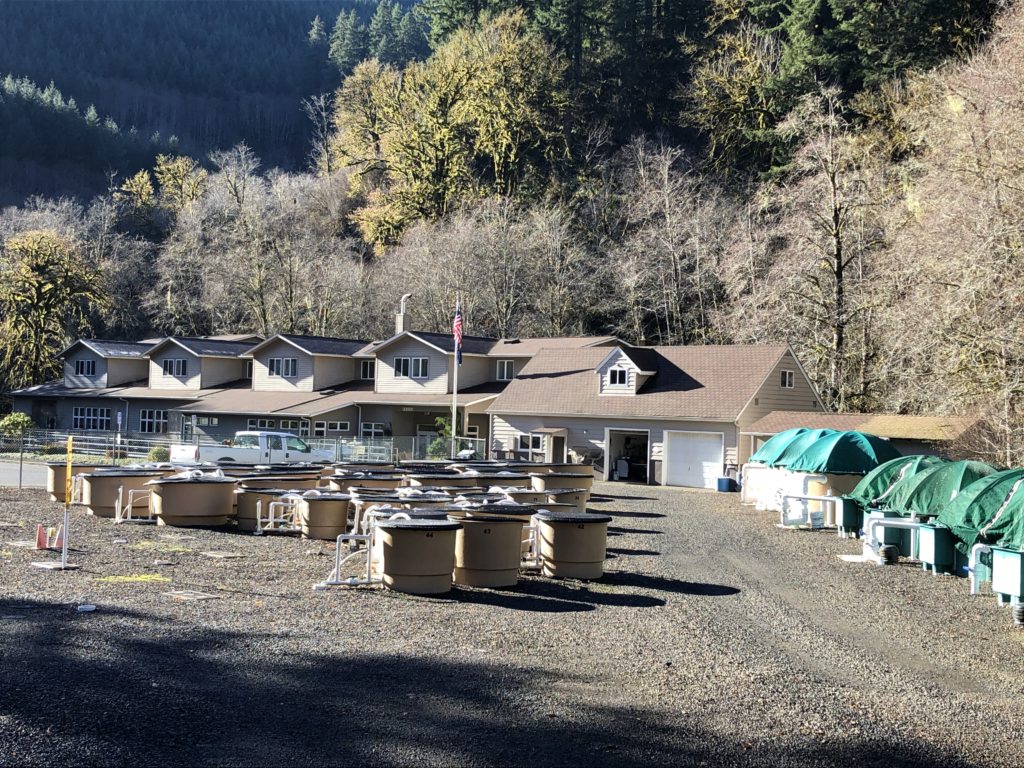
Research center operations resume
And, as much as possible during a very wet winter, life and work has returned to normal at the research center.
The center is operated by the Oregon Department of Fish & Wildlife in conjunction with Oregon State University. It sits on the site of a state coho salmon hatchery that closed in 1997. Eight years and $7.5 million later it reopened as a center for research on salmon and steelhead.
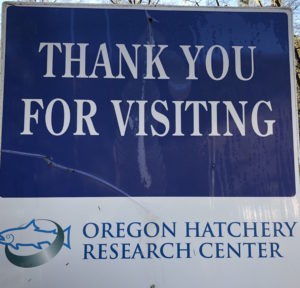
Jennifer Krajcik, who has managed the center for two years, said she and her staff are on call 24/7 to monitor any clogging at intakes that feed pipes providing water to research projects. Fall Creek provides water to projects outside the center buildings; a smaller creek furnishes water for projects inside.
Last week, Krajcik began letting water from Fall Creek flow into four, 180-foot-long gravel runs for an ODFW research project. Normally those are not used in the winter.
She said the three days of heavy rain leading up to the Dec. 20 slide were causing more problems for the hatchery’s water intake than the slide itself.
But her staff has learned to live with creek issues, making sure a settling pond is cleaned yearly and constantly monitoring the intake screens.
“Sediment is always a coastal stream issue,” Krajcik said. “We’ve just learned to work with what we’ve got.
“It wouldn’t surprise me if more came down,” she said. “It’s not a situation where we say, “Cool, it’s over, we can go on.’ We’re ready.”


